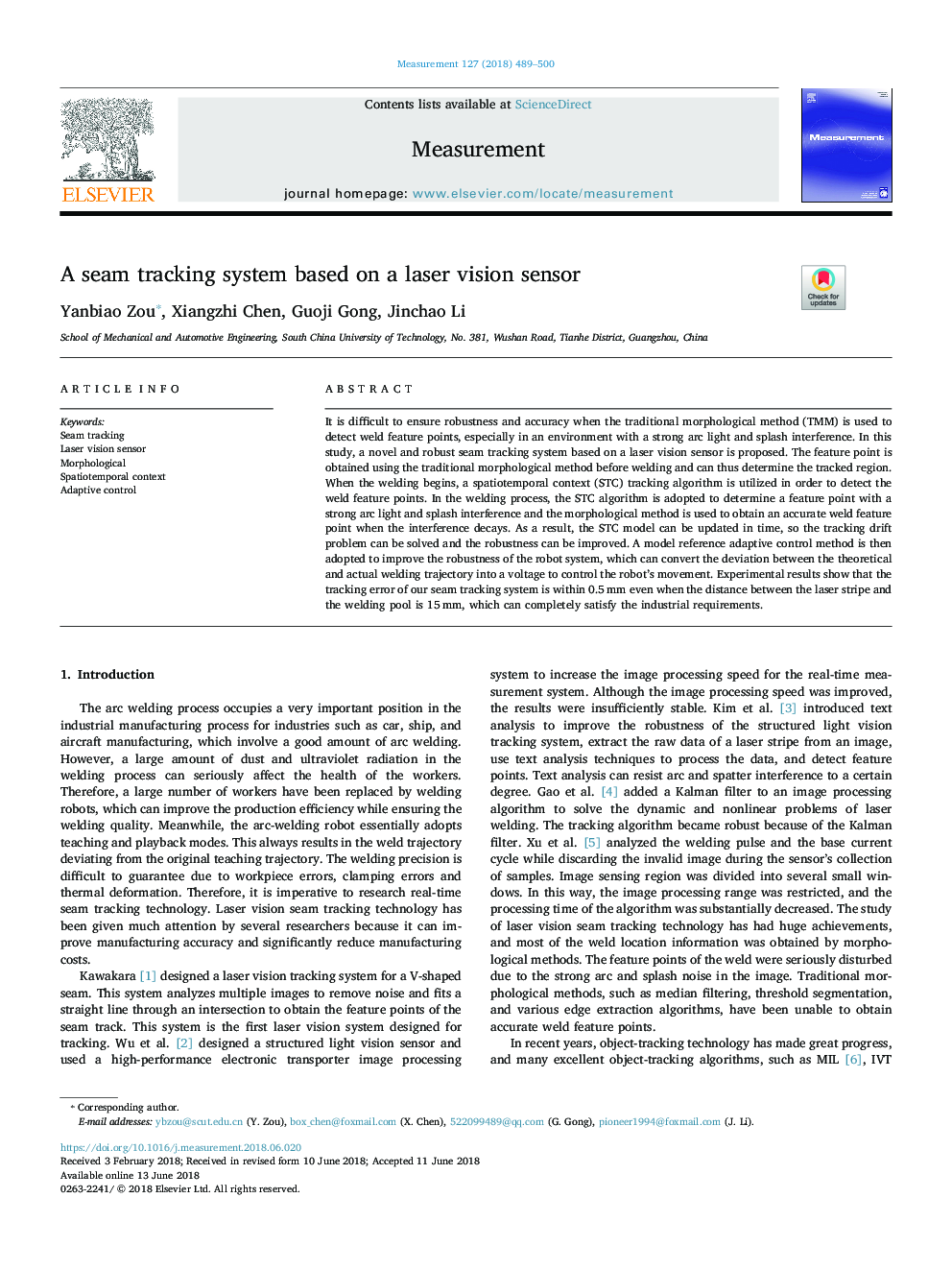| Article ID | Journal | Published Year | Pages | File Type |
|---|---|---|---|---|
| 7120767 | Measurement | 2018 | 12 Pages |
Abstract
It is difficult to ensure robustness and accuracy when the traditional morphological method (TMM) is used to detect weld feature points, especially in an environment with a strong arc light and splash interference. In this study, a novel and robust seam tracking system based on a laser vision sensor is proposed. The feature point is obtained using the traditional morphological method before welding and can thus determine the tracked region. When the welding begins, a spatiotemporal context (STC) tracking algorithm is utilized in order to detect the weld feature points. In the welding process, the STC algorithm is adopted to determine a feature point with a strong arc light and splash interference and the morphological method is used to obtain an accurate weld feature point when the interference decays. As a result, the STC model can be updated in time, so the tracking drift problem can be solved and the robustness can be improved. A model reference adaptive control method is then adopted to improve the robustness of the robot system, which can convert the deviation between the theoretical and actual welding trajectory into a voltage to control the robot's movement. Experimental results show that the tracking error of our seam tracking system is within 0.5â¯mm even when the distance between the laser stripe and the welding pool is 15â¯mm, which can completely satisfy the industrial requirements.
Related Topics
Physical Sciences and Engineering
Engineering
Control and Systems Engineering
Authors
Yanbiao Zou, Xiangzhi Chen, Guoji Gong, Jinchao Li,
